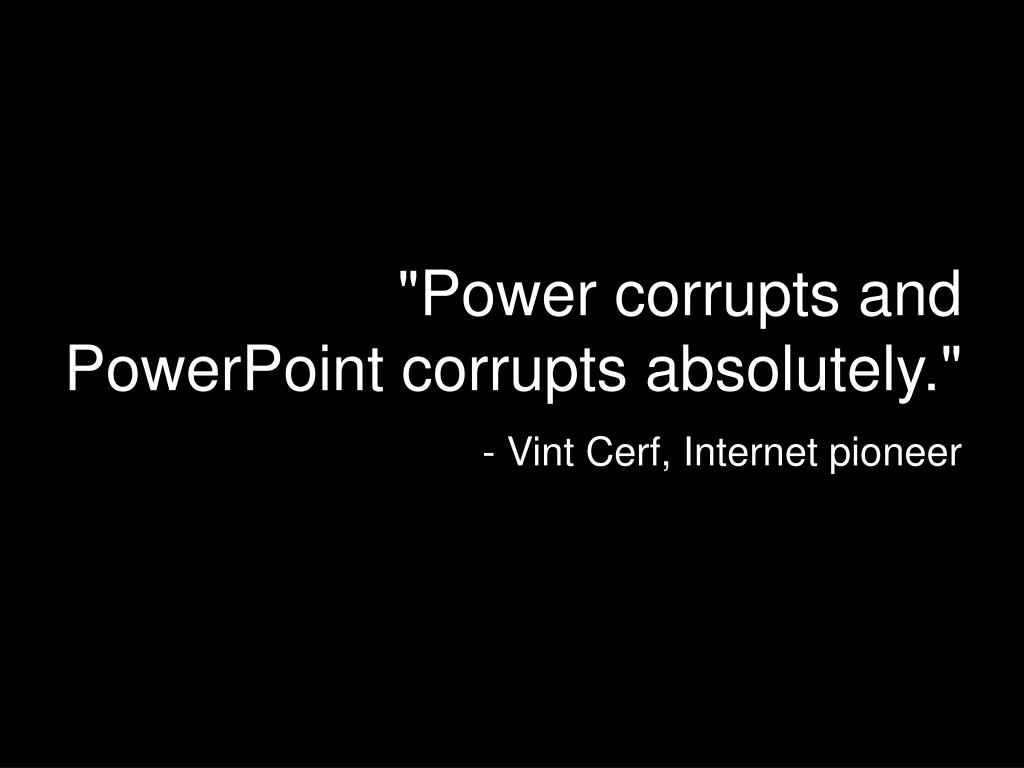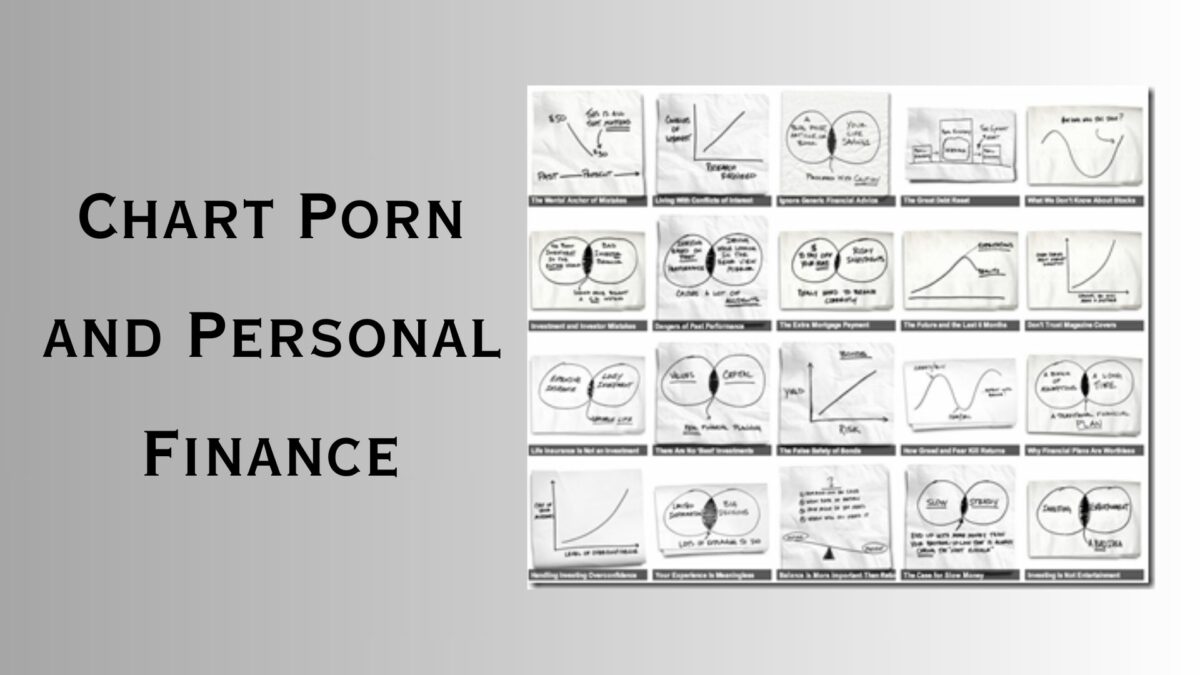“PowerPoint makes us stupid.”
–Gen. James N. Mattis, Marine Corps
“Power corrupts and PowerPoint corrupts absolutely.”
— Vint Cerf

I am about to relate to you the scary, dark tale of how I was led unwittingly into the world of front-loaded mutual funds. It’s not quite as bad as my most mortifying money moment, but it is still a tale of woe. Beware all ye who enter.
The year was 1998. I had just returned from my second deployment to Bosnia. Since I was in a “combat zone”, I got all sorts of benefits, including hostile fire pay (the only shots fired while I was there were the ones from senior officers who didn’t know how to properly clear their pistols) and not having to pay taxes on my salary, so I was flush with cash.
I got approached by a former officer from my unit who was now working for a “financial planning” company. This company hired former military officers to then prowl their former posts and sell financial products. These products were HEAVILY commission based.
Little did I know that they had lots of chart porn to hide the realities of the situation. The sales rep was pushing a set of Templeton mutual funds which had a serious front load. Since it was 1998, I can’t even pretend to know what the actual front load was, but there was a hefty one. However, with the brilliance of a Power Point chart and some sleight of hand, it was all explained away.
“If you invest in a mutual fund with a front load, you commit yourself because you don’t want to get out of the fund until the load is paid off,” he explained. I paraphrase. I can’t remember the exact conversation of well over a decade ago, but I can certainly remember the gist of it.
Then, out came the chart porn. In a series of slides, the rep proceeded to explain to me the benefit of dollar cost averaging (which, by the way, is not as good as dollar value averaging). When the market went down, you wanted to invest more. AND…the chart porn continued…when people who are in no-load funds see the market go down, they sell, and then the fund doesn’t have the money to dollar cost average because it’s selling shares to pay for the people who are leaving the fund. According to the chart porn, in a no-load fund, my money was going to pay the people who were leaving, right out of my pocket into someone else’s pocket.
But, with a front load fund, that wouldn’t happen because NOBODY WOULD SELL! Nosiree…
I was a sucker for chart porn. I shoveled cash two-fisted at them and paid goodness knows how much in commissions.
Since I don’t have the records of my tremendous investing mistake – I suspect they were shredded in a circa 2000 cleansing ritual to expunge my soul of such bad decisions – I can only try here to recreate the situation.
Let’s say that I invested in a run-of-the-mill world index fund, such as Vanguard’s Total World Stock Index Fund (VTWSX). It has no load and has an expense ratio of 0.40%. Since the minimum investment is $3,000, I’ll assume that I’m dollar cost averaging annually, even though I think dollar value averaging is better, and we’ll examine how I did from January 1, 2009 to December 31, 2011.
In three years, I would have invested $9,000 and bought 563.943 shares. Adjusting for reinvestments, I would have $9,869 worth of stock for a very modest 9.7% return.
Now, let us compare how well I’d have to do in the equivalent Templeton fund, the fund family which this company funneled me into. Templeton has a World Fund, TEMWX. The fund has a 5.75% initial sales charge which is paid up front no matter what, and it also has a 1% surrender fee if the fund is sold in less than a year. I’ll assume that there will be no sales to trigger the Class C (surrender) fee. So, my $3,000 invested each year is actually $2,827.50 worth of investment power. The remaining $172.50 is sales advisor commission power.
No wonder the advisor I met with drove a nice BMW. I thought it was because of his investing prowess.
Over three years, I’d have put $8,482.50 into the market to work. In order to get to the $9,869 that my VTWSX, I’d have to have a 16.3% return over those three years – 6.7% better.
But, wait! the chart porn purveyors cry. The sales fee was only 5.75%. How did the required return increase? The answer is in compounding. Since less money gets to go to work in the market, it has to perform even better to make up for starting from behind.
Think of a track race. In the longer races, the runners start out staggered. It’s to account for the curves. Runners on the inside of the track start further behind because they don’t have to run as far in the curves. This situation is similar.
Except that the runner on the far outside of the track – the front loaded fund – doesn’t get a head start.
So, how would the same amounts invested in TEMWX do? $9,000 invested in TEMWX, once the fees are yanked out, would buy you 671.194 shares. After reinvestments, you’d have $9,222.20. You’d be $646.80 worse off.
But your sales rep who got the commission would be $517.50 better off. Let’s hope he doesn’t invest that money in TEMWX.
Just in case you don’t believe that there’s chart porn, let’s look at the TEMWX prospectus.
According to the chart porn, if you invested $10,000 in TEMWX, you’d be kicking the pants off of the world index.
Of course, they do manage to hide a little fine print right beneath this chart porn.
Tricky little chart pornists. Ignore that fine print. Look at the chart.
It’s easy to be fooled by chart porn. I was. Be critical. Think. Question. Understand. Otherwise, you’ll be watching Yuri Geller bending spoons all day, and you’ll believe it.
Have you ever been fooled by chart porn? Tell us about it in the comments below.
Author Profile
- John Davis is a nationally recognized expert on credit reporting, credit scoring, and identity theft. He has written four books about his expertise in the field and has been featured extensively in numerous media outlets such as The Wall Street Journal, The Washington Post, CNN, CBS News, CNBC, Fox Business, and many more. With over 20 years of experience helping consumers understand their credit and identity protection rights, John is passionate about empowering people to take control of their finances. He works with financial institutions to develop consumer-friendly policies that promote financial literacy and responsible borrowing habits.
Latest entries
 Low Income GrantsSeptember 25, 2023How to Get a Free Government Phone: A Step-by-Step Guide
Low Income GrantsSeptember 25, 2023How to Get a Free Government Phone: A Step-by-Step Guide Low Income GrantsSeptember 25, 2023Dental Charities That Help With Dental Costs
Low Income GrantsSeptember 25, 2023Dental Charities That Help With Dental Costs Low Income GrantsSeptember 25, 2023Low-Cost Hearing Aids for Seniors: A Comprehensive Guide
Low Income GrantsSeptember 25, 2023Low-Cost Hearing Aids for Seniors: A Comprehensive Guide Low Income GrantsSeptember 25, 2023Second Chance Apartments that Accept Evictions: A Comprehensive Guide
Low Income GrantsSeptember 25, 2023Second Chance Apartments that Accept Evictions: A Comprehensive Guide

